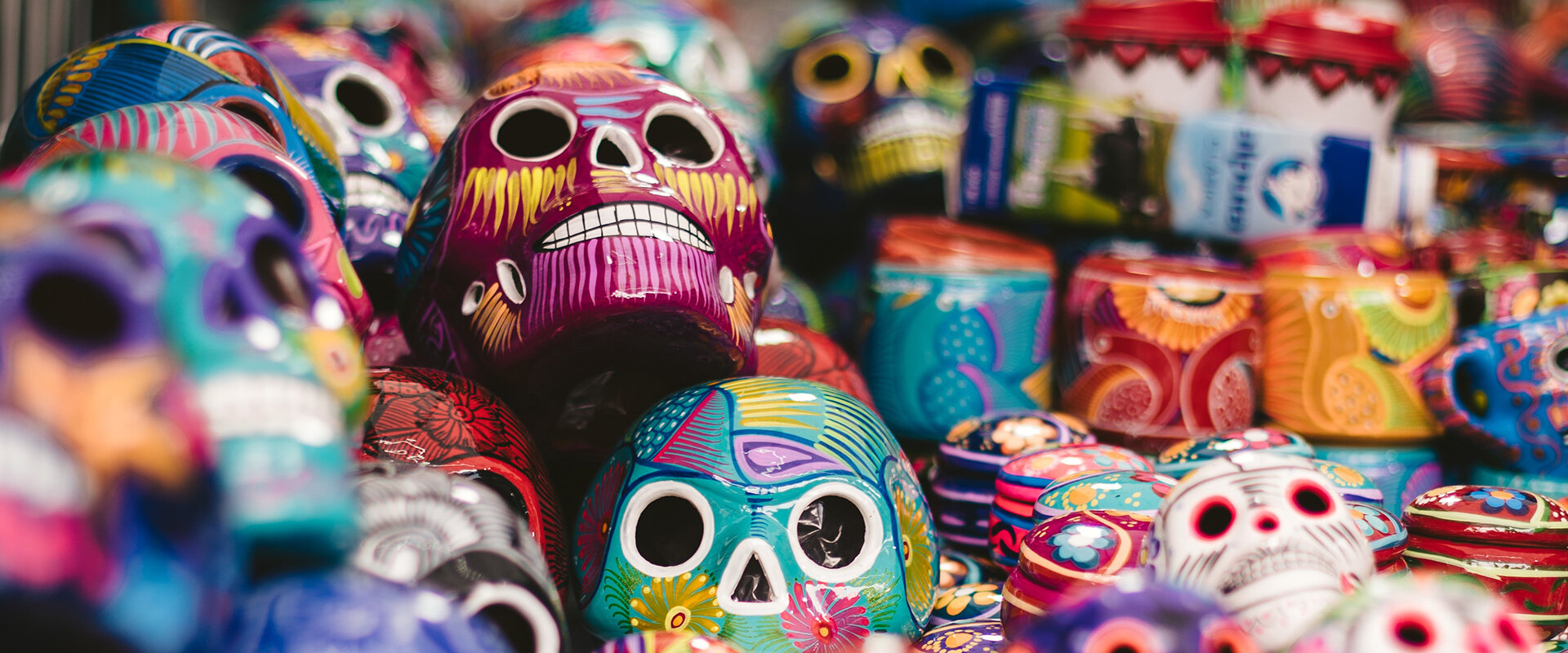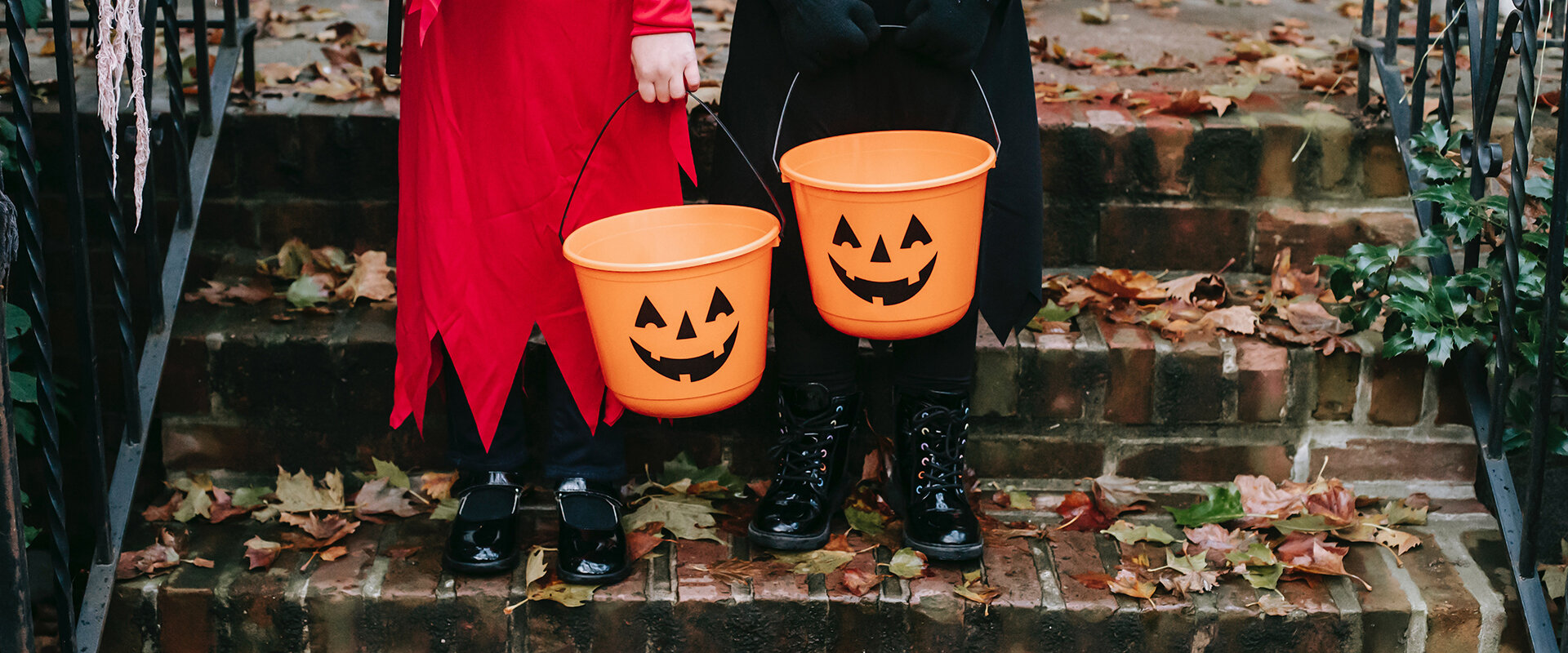A traveller's guide to Halloween around the world
Boo!
Spooky season finally is upon us—and many of us are already carving faces into pumpkins, on the hunt for the perfect costume, or queueing up the latest horror movies on Netflix. In North America, these traditions are a widespread practice - but not all of us celebrate Halloween in the same way.
As with many holidays, the celebrations, traditions, and customs that take place in late October and early November will vary around the world. For some cultures, it's all about haunted houses and trick-or-treating—for others, it’s a day of sharing traditional recipes or holding space for the dead.
Curious about how other countries celebrate the season? Read on for our traveller's guide to Halloween festivities around the globe.
Ireland
Many will tell you that the history of Halloween originated with the Celts thousands of years ago. Before it was dubbed “Halloween” or “All Souls’ Day” on November 2nd, it was known by the Celts as Samhain. This was a festival to mark the end of the harvest season during a time of year when it was believed to be easiest to communicate with the dead. Back then, they’d burn massive bonfires and wear animal skins while contacting spirits. As time went on, Christians renamed the pagan holiday All Souls’ Day (also known as All Saints’ Day). Today in Ireland, folks might bob for apples, pray for dead friends and family, or eat barmbrack—a fruitcake often containing a hidden coin for one lucky member at the table.
Mexico
You can’t talk about these annual celebrations without talking about Mexico. El Día de los Muertos (Day of the Dead) is celebrated in homes and graveyards each year on November 2nd. A celebration which is intended to guide deceased souls back to earth, Día de los Muertos has family members creating candlelit altars for relatives decorated with flowers, paper, bread and other foods, skulls and incense. In facilitating the return of loved ones, Mexican people will of course put on a good party. Of all the festivities, the ones in Oaxaca are said to be some of the most significant in the country.
This UNESCO recognized celebration dates back to pre-Hispanic times and for those not completely familiar with Día de los Muertos, you’ll probably at least recognize the calavera Catrina—the most iconic of the holiday’s symbols.

Ecuador
Like other Latin American countries, Ecuadorians celebrate Día de los Muertos to honour the souls of loved ones who have passed. While the name and date are the same as the Mexican holiday, there are many differences in how the festivities play out in each respective country. On November 2nd, Ecuadorians around the country will also be seen visiting the graves of loved ones and bringing flowers.
In this South American country though, Día de los Muertos is known for one special food and drink pairing. Guaguas de pan (guaguas meaning “babies” in the Indigenous Quechuan language of the Andes and pan translating to “bread” in Spanish) and colada morada (a purple drink made of berries). Here, the guaguas de pan are meant to represent the deceased. The pairing of this bread and juice can be found at the entrances to cemeteries as well as restaurants and bakeries throughout any main town or city in Ecuador.
Canada and the U.S.
This hardly has to be mentioned to someone from Canada or the U.S., but foreign backpackers visiting at the end of October may not totally be familiar with the Halloween customs and traditions. For adults and children alike, this is an opportunity to dress up in costumes—frightening or silly—while neighbourhood kids hop from door to door, trick-or-treating for candy. Quieter nights (like those spent in hostel kitchens after a day of sightseeing) might involve carving pumpkins, swapping ghost stories, or watching eerie horror movies.

Italy
Italians know this day by the name Ognissanti. The celebrations usually happen on the night between November 1st and 2nd and just like with many cultures across the globe, the Italians put their efforts towards remembering friends, family and ancestors who have died. The way that this is celebrated depends on which part of Italy you visit. Pumpkin lanterns, vigils and the ringing of church bells are all quite common in this European country. In some cases, families will pour a pitcher of water or set a place at the table and leave out food for their departed family member. In other cases, they might eat a meal at the grave to prevent loved ones from feeling lonely. On the eve of November 1st, you may also spot candles flickering in the windows of Italian homes as a symbol of remembrance for those who passed.
The Philippines
In the Philippines, November cannot roll around without massive feasts being planned all over the country. All Saints Day in this Southeast Asian country is known as Undas and it’s celebrated not only by visiting and cleaning the graves of loved ones, but arriving with the whole family on tow—and meals big enough to satisfy the most ravenous of appetites. We’re talking extravagant dishes here of steamed rice cakes, spring rolls, cassava cake or adobo (the national dish). If a visitor would wander through graveyards on this day, they’d see graves adored with flowers, candles and ornaments—the works!



